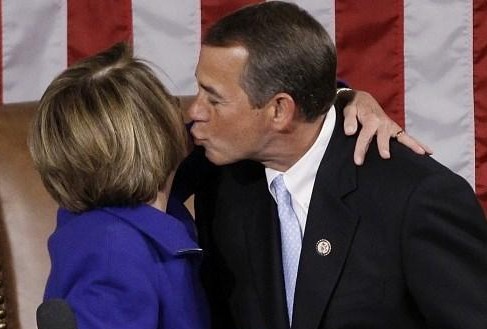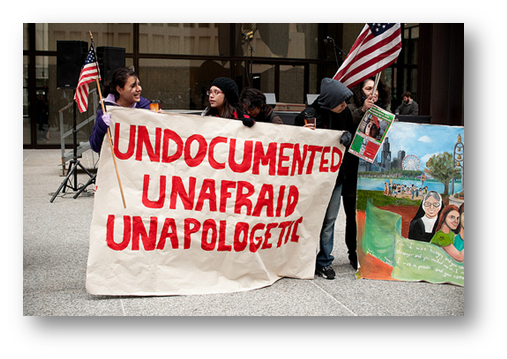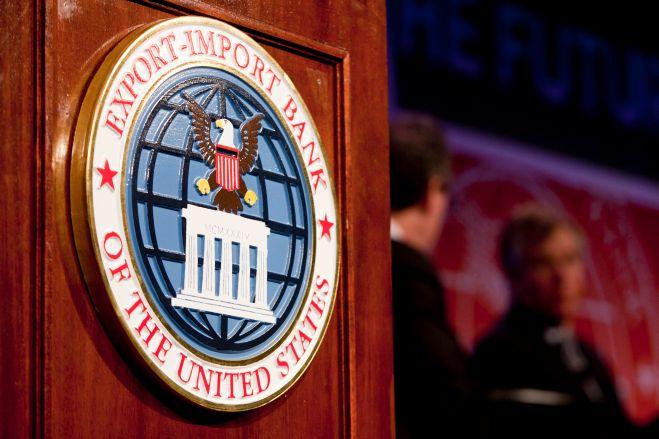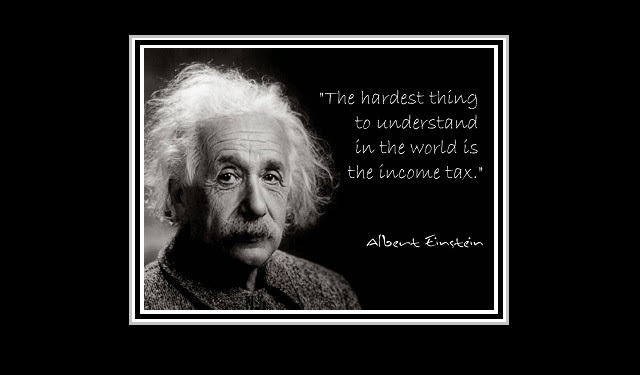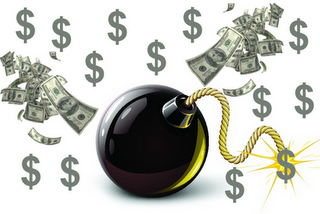Those who use the work of Mises to challenge bitcoin should think again.
Many people who have never used bitcoin look at it with confusion. Why does this magic Internet money have any value at all? It’s just some computer thing that someone made up.
Consider the criticism of goldbugs, who have, for decades, pushed the idea that sound money must be backed by something real, hard, and independently valuable.
Bitcoin doesn’t qualify, right?
Maybe it does. Let’s take a closer look.
Bitcoin first emerged as a possible competitor to national, government-managed money nearly six years ago. Satoshi Nakamoto’s white paper was released October 31, 2008. The structure and language of this paper sent the message: this currency is for computer technicians, not economists nor political pundits. The paper’s circulation was limited; novices who read it were mystified.
But the lack of interest didn’t stop history from moving forward. Two months later, those who were paying attention saw the emergence of the “Genesis Block,” the first group of bitcoins generated through Nakamoto’s concept of a distributed ledger that lived on any computer node in the world that wanted to host it.
Here we are six years later and a single bitcoin trades at $500 and has been as high as $1,200 per coin.The currency is accepted by many thousands of institutions, both online and offline. Its payment system is very popular in poor countries without vast banking infrastructures but also in developed countries. And major institutions—including the Federal Reserve, the OECD, the World Bank, and major investment houses—are paying respectful attention.
Enthusiasts, who are found in every country, say that its exchange value will soar in the future because its supply is strictly limited and it provides a vastly superior system to government money. Bitcoin is transferred between individuals without a third party. It is nearly costless to exchange. It has a predictable supply. It is durable, fungible, and divisible: all crucial features of money. It creates a monetary system that doesn’t depend on trust and identity, much less on central banks and government. It is a new system for the digital age.
Hard lessons for hard money
To those educated in the “hard money” tradition, the whole idea has been a serious challenge. Speaking for myself, I had been reading about bitcoin for two years before I came anywhere close to understanding it. There was just something about the whole idea that bugged me. You can’t make money out of nothing, much less out of computer code. Why does it have value then? There must be something amiss. This is not how we expected money to be reformed.
There’s the problem: our expectations. We should have been paying closer attention to Ludwig von Mises’s theory of money’s origins—not to what we think he wrote, but to what he actually did write.
In 1912, Mises released The Theory of Money and Credit. It was a huge hit in Europe when it came out in German, and it was translated into English. While covering every aspect of money, his core contribution was in tracing the value and price of money—and not just money itself—to its origins. That is, he explained how money gets its price in terms of the goods and services it obtains. He later called this process the “regression theorem,” and as it turns out, bitcoin satisfies every condition of the theorem.
Mises’s teacher, Carl Menger, demonstrated that money itself originates from the market—not from the State and not from social contract. It emerges gradually as monetary entrepreneurs seek out an ideal form of commodity for indirect exchange. Instead of merely bartering with each other, people acquire a good not to consume, but to trade. That good becomes money, the most marketable commodity.
But Mises added that the value of money traces backward in time to its value as a bartered commodity. Mises said that this is the only way money can have value.
The theory of the value of money as such can trace back the objective exchange value of money only to that point where it ceases to be the value of money and becomes merely the value of a commodity…. If in this way we continually go farther and farther back we must eventually arrive at a point where we no longer find any component in the objective exchange value of money that arises from valuations based on the function of money as a common medium of exchange; where the value of money is nothing other than the value of an object that is useful in some other way than as money…. Before it was usual to acquire goods in the market, not for personal consumption, but simply in order to exchange them again for the goods that were really wanted, each individual commodity was only accredited with that value given by the subjective valuations based on its direct utility.
Mises’s explanation solved a major problem that had long mystified economists. It is a narrative of conjectural history, and yet it makes perfect sense. Would salt have become money had it otherwise been completely useless? Would beaver pelts have obtained monetary value had they not been useful for clothing? Would silver or gold have had money value if they had no value as commodities first? The answer in all cases of monetary history is clearly no. The initial value of money, before it becomes widely traded as money, originates in its direct utility. It’s an explanation that is demonstrated through historical reconstruction. That’s Mises’s regression theorem.
Bitcoin’s use value
At first glance, bitcoin would seem to be an exception. You can’t use a bitcoin for anything other than money. It can’t be worn as jewelry. You can’t make a machine out of it. You can’t wear it, eat it, or even decorate with it. Its value is only realized as a unit that facilitates indirect exchange. And yet, bitcoin already is money. It’s used every day. You can see the exchanges in real time. It’s not a myth. It’s the real deal.
It might seem like we have to choose. Is Mises wrong? Maybe we have to toss out his whole theory. Or maybe his point was purely historical and doesn’t apply in the future of a digital age. Or maybe his regression theorem is proof that bitcoin is just an empty mania with no staying power, because it can’t be reduced to its value as a useful commodity.
And yet, you don’t have to resort to complicated monetary theory in order to understand the sense of alarm surrounding bitcoin. Many people, as I did, just have a feeling of uneasiness about a money that has no basis in anything physical. Sure, you can print out a bitcoin on a piece of paper, but having a paper with a QR code or a public key is not enough to relieve that sense of unease.
How can we resolve this problem? In my own mind, I toyed with the issue for more than a year. It puzzled me. I wondered if Mises’s insight applied only in a predigital age. I followed the speculations online that the value of bitcoin would be zero but for the national currencies into which is converted. Perhaps the demand for bitcoin overcame the demands of Mises’s scenario because of a desperate need for something other than the dollar.
As time has passed—and I read the work of Konrad Graf, Peter Surda, and Daniel Krawisz—finally the resolution came. I will cut to the chase and reveal it: Bitcoin is both a payment system and a money. The payment system is the source of value, while the accounting unit merely expresses that value in terms of price. The unity of money and payment is its most unusual feature, and the one that most commentators have had trouble wrapping their heads around.
We are all used to thinking of currency as separate from payment systems. This thinking is a reflection of the technological limitations of history. There is the dollar and there are credit cards. There is the euro and there is PayPal. There is the yen and there are wire services. In each case, money transfer relies on third-party service providers. In order to use them, you need to establish what is called a “trust relationship” with them, which is to say that the institution arranging the deal has to believe that you are going to pay.
This wedge between money and payment has always been with us, except for the case of physical proximity. If I give you a dollar for your pizza slice, there is no third party. But payment systems, third parties, and trust relationships become necessary once you leave geographic proximity. That’s when companies like Visa and institutions like banks become indispensable. They are the application that makes the monetary software do what you want it to do.
The hitch is that payment systems we have today are not available to just anyone. In fact, a vast majority of humanity does not have access to such tools, which is a major reason for poverty in the world. The financially disenfranchised are confined to only local trade and cannot extend their trading relationships with the world.
A major, if not a primary, purpose of developing Bitcoin was to solve this problem. The protocol set out to weave together the currency feature with a payment system. The two are utterly interlinked in the structure of the code itself. This connection is what makes bitcoin different from any existing national currency, and, really, any currency in history.
Let Nakomoto speak from the introductory abstract to his white paper. Observe how central the payment system is to the monetary system he created:
A purely peer-to-peer version of electronic cash would allow online payments to be sent directly from one party to another without going through a financial institution. Digital signatures provide part of the solution, but the main benefits are lost if a trusted third party is still required to prevent double-spending. We propose a solution to the double-spending problem using a peer-to-peer network. The network timestamps transactions by hashing them into an ongoing chain of hash-based proof-of-work, forming a record that cannot be changed without redoing the proof-of-work. The longest chain not only serves as proof of the sequence of events witnessed, but proof that it came from the largest pool of CPU power. As long as a majority of CPU power is controlled by nodes that are not cooperating to attack the network, they’ll generate the longest chain and outpace attackers. The network itself requires minimal structure. Messages are broadcast on a best effort basis, and nodes can leave and rejoin the network at will, accepting the longest proof-of-work chain as proof of what happened while they were gone.
What’s very striking about this paragraph is that there is not even one mention of the currency unit itself. There is only the mention of the problem of double-spending (which is to say, the problem of inflationary money creation). The innovation here, even according to the words of its inventor, is the payment network, not the coin. The coin or digital unit only expresses the value of the network. It is an accounting tool that absorbs and carries the value of the network through time and space.
This network is called the blockchain. It’s a ledger that lives in the digital cloud, a distributed network, and it can be observed in operation by anyone at any time. It is carefully monitored by all users. It allows the transference of secure and non-repeatable bits of information from one person to any other person anywhere in the world, and these information bits are secured by a digital form of property title. This is what Satoshi called “digital signatures.” His invention of the cloud-based ledger allows property rights to be verified without having to depend on some third-party trust agency.
The blockchain solved what has come to be known as the Byzantine generals’ problem. This is the problem of coordinating action over a large geographic range in the presence of potentially malicious actors. Because generals separated by space have to rely on messengers and this reliance takes time and trust, no general can be absolutely sure that the other general has received and confirmed the message, much less its accuracy.
Putting a ledger, to which everyone has access, on the Internet overcomes this problem. The ledger records the amounts, the times, and the public addresses of every transaction. The information is shared across the globe and always gets updated. The ledger guarantees the integrity of the system and allows the currency unit to become a digital form of property with a title.
Once you understand this, you can see that the value proposition of bitcoin is bound up with its attached payment network. Here is where you find the use value to which Mises refers. It is not embedded in the currency unit but rather in the brilliant and innovative payment system on which bitcoin lives. If it were possible for the blockchain to be somehow separated from bitcoin (and, really, this is not possible), the value of the currency would instantly fall to zero.
Proof of concept
Now, to further understand how Mises’s theory fits with bitcoin, you have to understand one other point concerning the history of the cryptocurrency. On the day of its release (January 9, 2009), the value of bitcoin was exactly zero. And so it remained for 10 months after its release. All the while, transactions were taking place, but it had no posted value above zero for this entire time.
The first posted price of bitcoin appeared on October 5, 2009. On this exchange, $1 equaled 1,309.03 Bitcoin (which many considered overpriced at the time). In other words, the first valuation of bitcoin was little more than one-tenth of a penny. Yes, if you had bought $100 worth of bitcoin in those days, and not sold them in some panic, you would be a half-billionaire today.
So here is the question: What happened between January 9 and October 5, 2009, to cause bitcoin to obtain a market value? The answer is that traders, enthusiasts, entrepreneurs, and others were trying out the blockchain. They wanted to know if it worked. Did it transfer the units without double-spending? Did a system that depended on voluntary CPU power actually suffice to verify and confirm transactions? Do the rewarded bitcoins land in the right spot as payment for verification services? Most of all, did this new system actually work to do the seemingly impossible—that is, to move secure bits of title-based information through geographic space, not by using on some third party but rather peer-to-peer?
It took 10 months to build confidence. It took another 18 months before bitcoin reached parity with the U.S. dollar. This history is essential to understand, especially if you are relying on a theory of money’s origins that speculates about the pre-history of money, as Mises’s regression theorem does. Bitcoin was not always a money with value. It was once a pure accounting unit attached to a ledger. This ledger is what obtained what Mises called “use value.” All conditions of the theorem are thereby satisfied.
Final accounting
To review, if anyone says that bitcoin is based on nothing but thin air, that it cannot be a money because it has no real history as a genuine commodity, and whether the person saying this is a novice or a highly trained economist, you need to bring up two central points. One, bitcoin is not a stand-alone currency but a unit of accounting attached to an innovative payment network. Two, this network and therefore bitcoin only obtained its market value through real-time testing in a market environment.
In other words, once you account for the razzle-dazzle technical features, bitcoin emerged exactly like every other currency, from salt to gold, did. People found the payment system useful, and the attached accounting was portable, divisible, fungible, durable, and scarce.
Money was born. This money has all the best features of money from history but adds a weightless and spaceless payment network that enables the entire world to trade without having to rely on third parties.
But notice something extremely important here. The blockchain is not only about money. It is about any information transfers that require security, confirmations, and total assurance of authenticity. This pertains to contracts and transactions of all sorts, all performed peer-to-peer. Think of a world without third parties, including the most dangerous third party ever conceived of by man: the State itself. Imagine that future and you begin to grasp the fullness of the implications of our future.
Mises would be amazed and surprised at bitcoin. But he might also feel a sense of pride that his monetary theory of more than 100 years ago has been confirmed and given new life in the 21st century.
Jeffrey Tucker is a distinguished fellow at FEE, CLO of the startup Liberty.me, and editor at Laissez Faire Books. He speaks at FEE summer seminars and other events.

